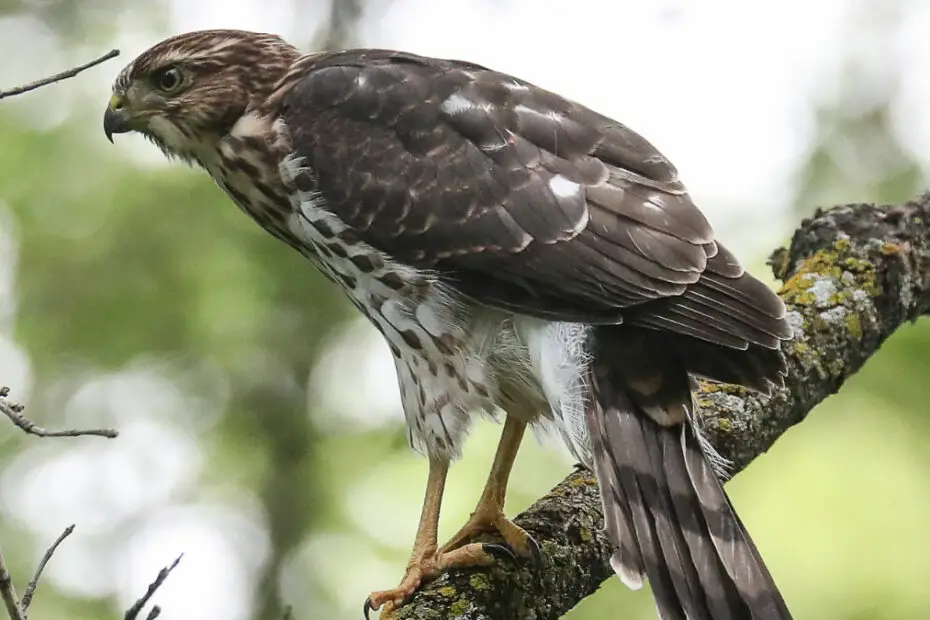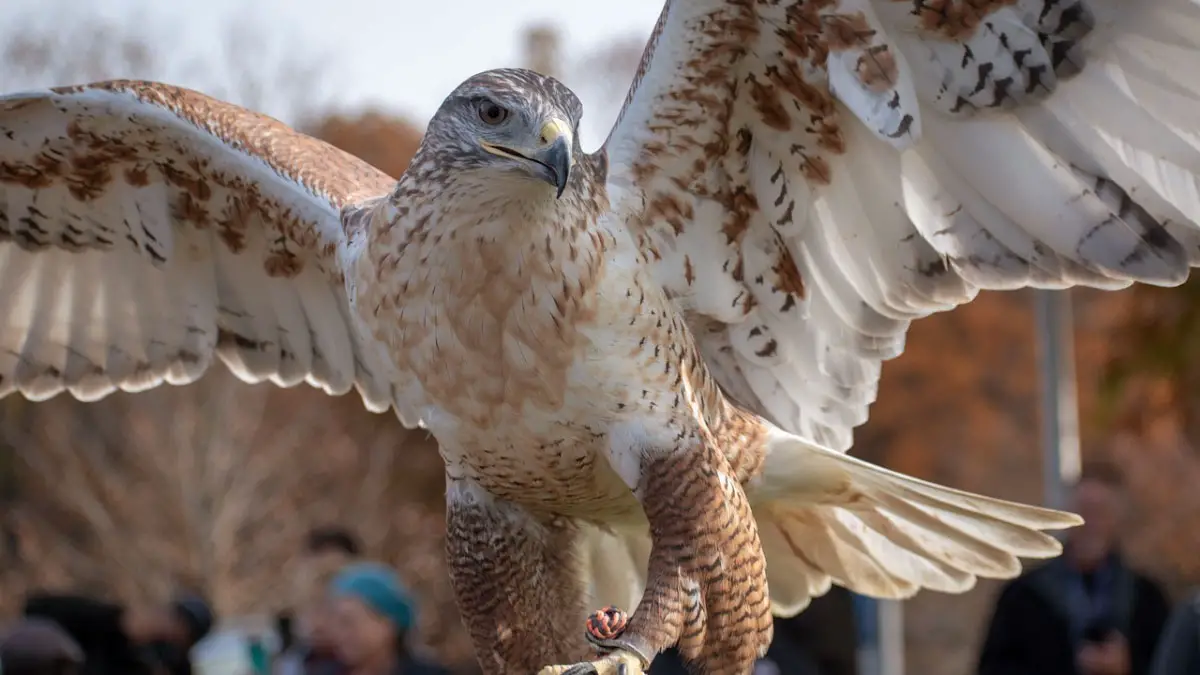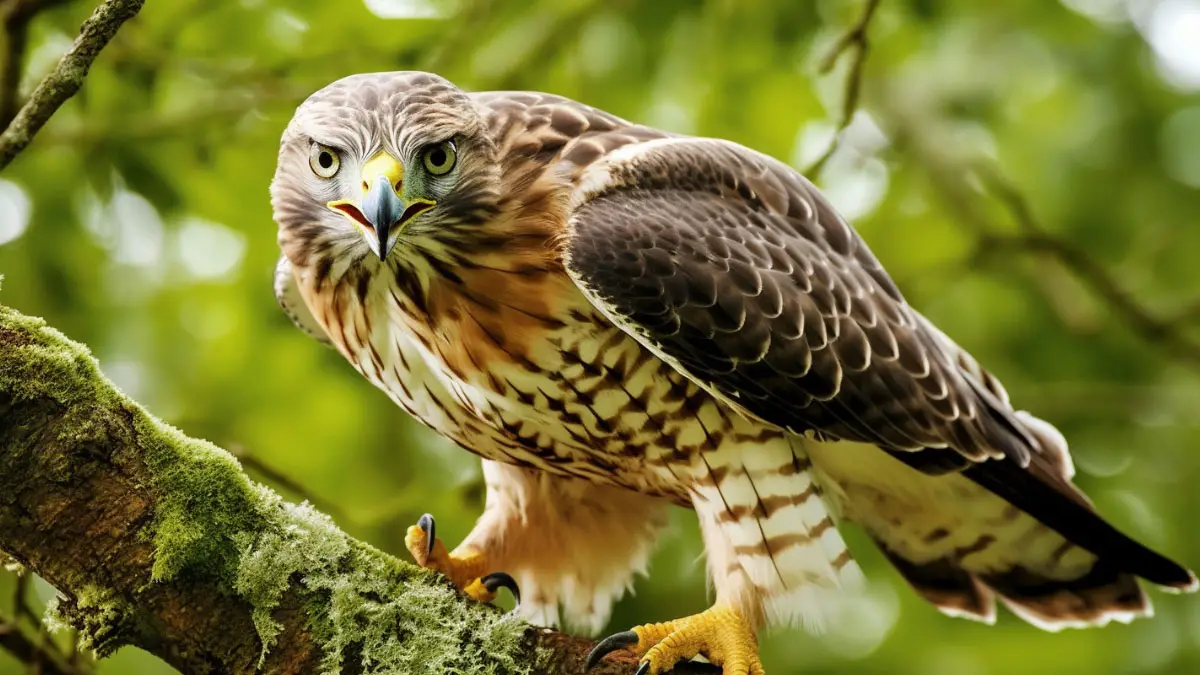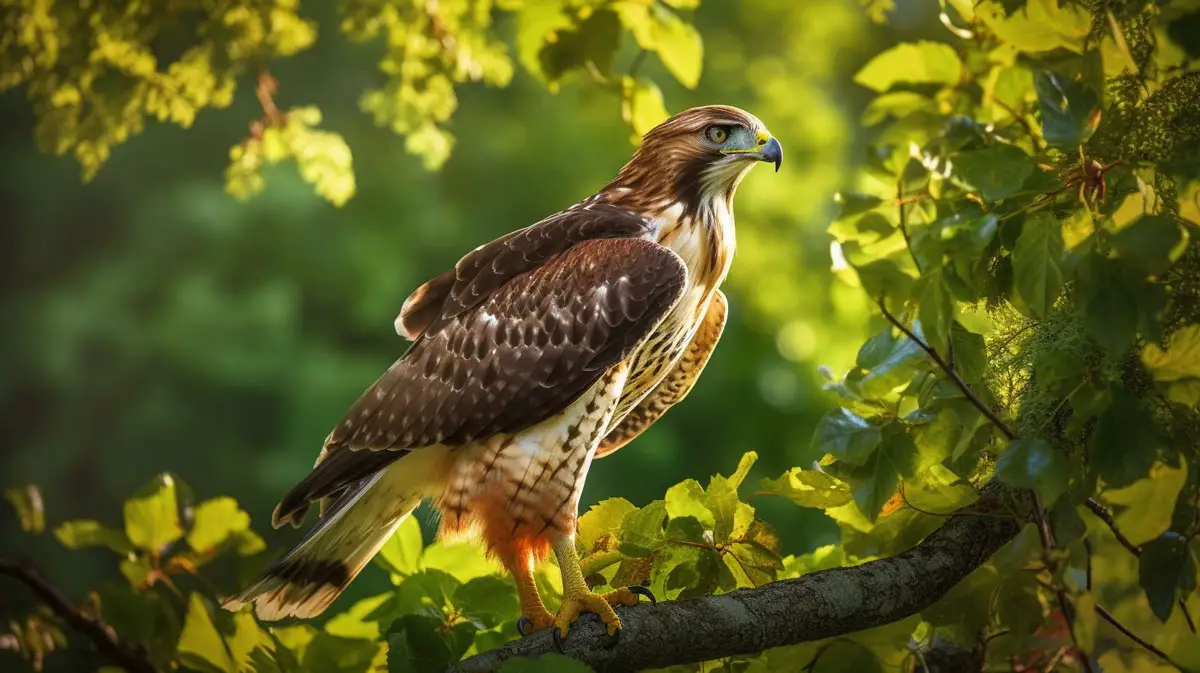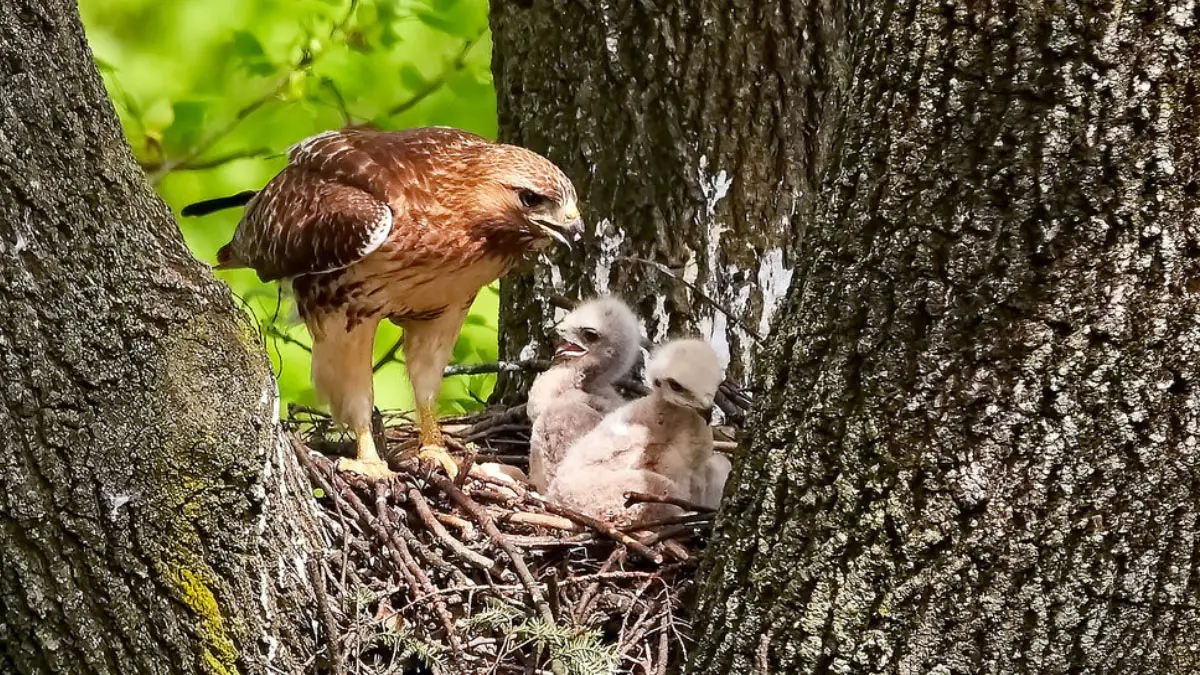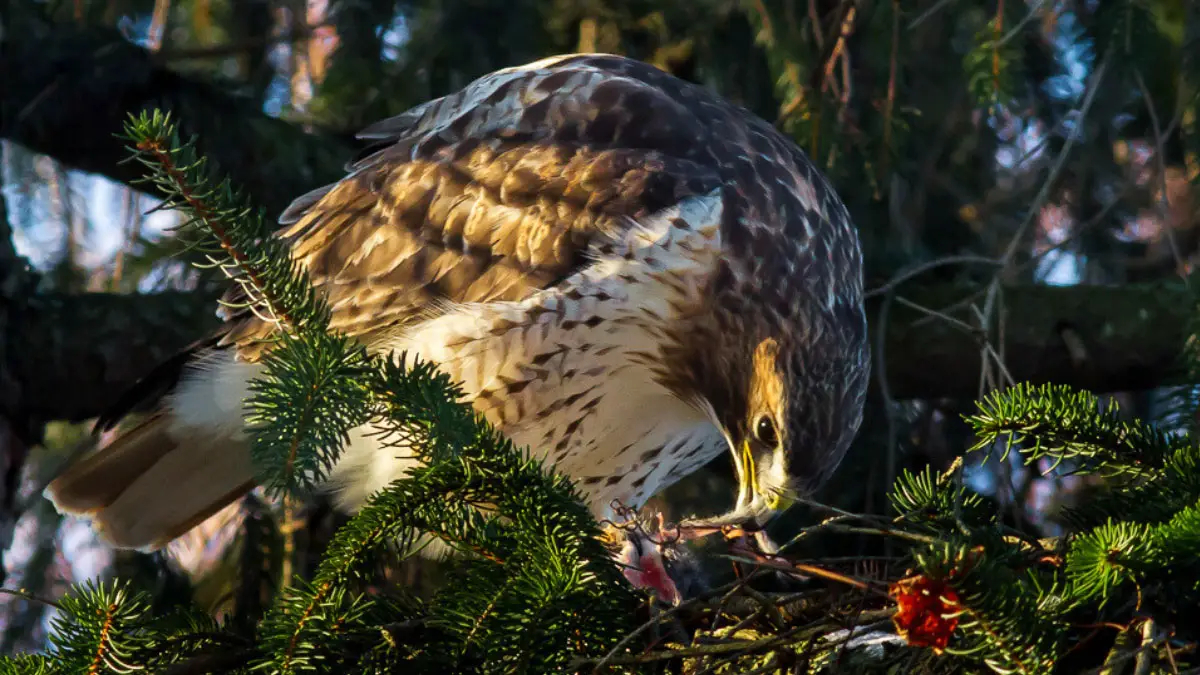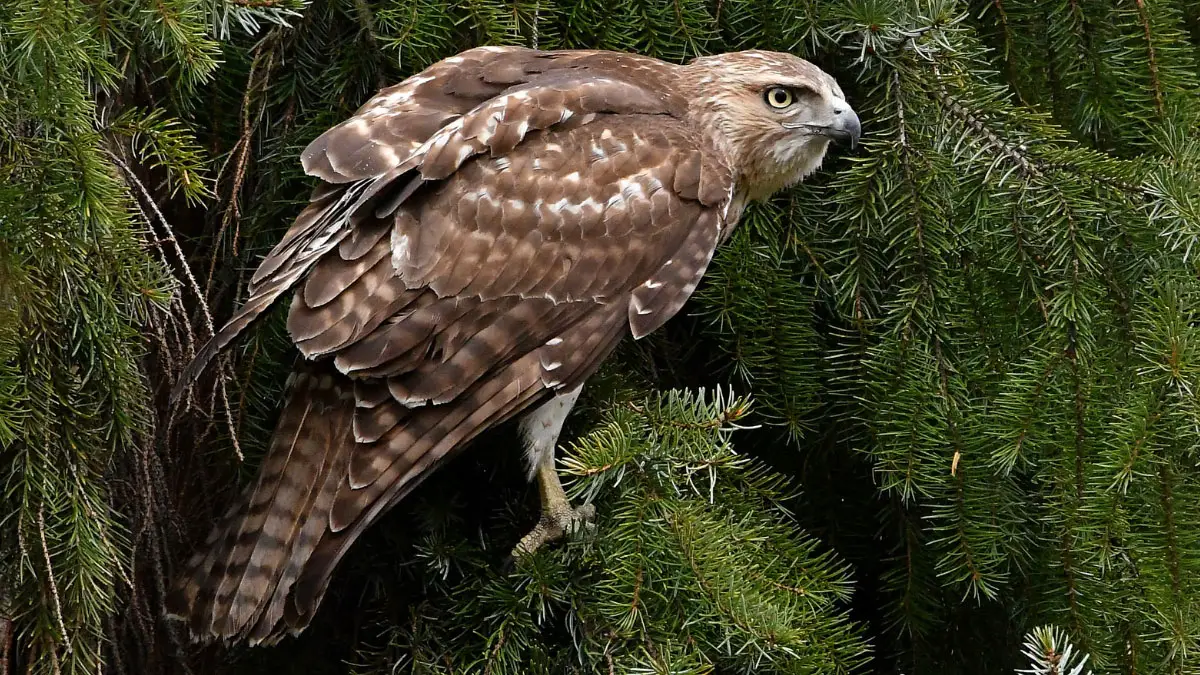Hawks are predatory birds characterized by their keen eyesight, sharp talons, and hooked bills. Typically, there are about 200 hawk species across the world found in a variety of habitats. And all of these species play a vital role in the ecosystem, helping maintain biodiversity. But how? You ask.
These raptors do this by preying on rodents, insects, reptiles, amphibians, and other birds, helping control their populations. In addition, they are a food source for other animals like foxes and eagles.
Like other raptors, these birds boast exceptional acoustic abilities critical for bird communication. For example, their ears are placed asymmetrically, allowing them to accurately detect sounds. On top of that, these birds boast extensive sound frequencies and hence can hear even faint noises.
These birds’ ability to hear is excellent, featuring a frequency range of up to 8 kHz. So, do hawks use their hearing to hunt? Yes, they do use their auditory cues to hunt.
Now, understanding the hawk auditory process for research and conservation efforts is very important. This is because researchers can gain insights into the underlying mechanisms of these birds’ acoustic processing. As a result, they can create better survey programs for monitoring these birds.
In this guide, we will discuss everything there is to know about the hearing facts of a hawk’s ear.
Anatomy of a Hawk’s Ear
These birds have two large ears proportionate to their body size. They are positioned behind and underneath their eyes on either side of the head. The ears are concealed by feathers, also known as auricular feathers.
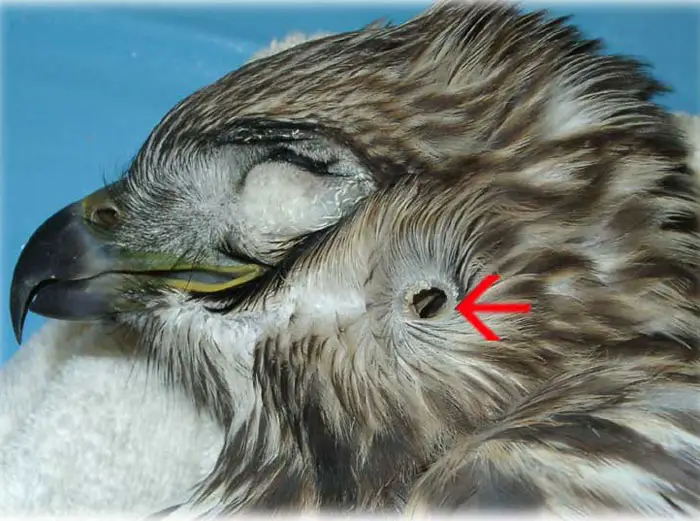
Additionally, hawk’s ears are vertically offset or asymmetrical. This simply means one of the ear openings is a bit higher on the head than the other for enhanced sound transmission. On top of that, each ear comprises several parts. These include:
External Auditory Meatus
This is the outer ear which is connected to the middle ear via a passageway or canal. It is usually covered by feathers and is designed to direct sound waves into the middle ear.
Middle Ear
The middle ear comprises several bones known as ossicles. These bones typically amplify vibrations from the tympanic membrane, conveying them to the inner ear.
Inner Ear
Additionally, there is the inner ear that comprises cochlea which is a fluid-filled structure lined with specialized sensory cells or hair cells. These cells are sensitive to various sound frequencies.
Tympanic Membrane

Additionally, there is a tympanic membrane, also known as the eardrum, that bulges outwards and surrounds the external auditory meatus. This membrane is for receiving sound vibrations from the outside air.
Comparison of Hawk Ear Structure to Other Bird Species
Although hawk species and other bird species have some similar features in their ear structures, they also have some differences. These include:
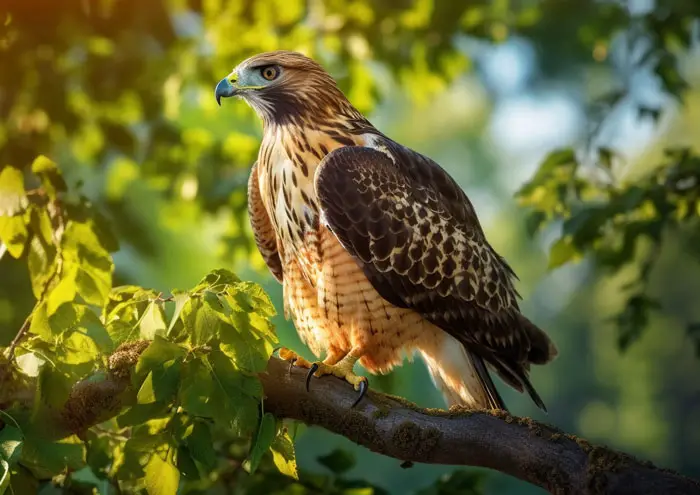
- Aquatic Birds: Aquatic bird species like geese and ducks have a longer ear canal than hawk species for improved sound detection underwater. Also, aquatic birds’ tympanic membranes are covered by a thin membrane, which can be closed. This helps protect the bird’s ears from water pressure during diving.
- Songbirds: Songbirds, such as wood thrush, warbler, wrens, and blackbird are smaller than most hawk species. Therefore, their ears are smaller proportionate to their body size, while hawk species have relatively bigger ears. Also, these species have more hair cells in their inner ear than songbirds, allowing them to detect more sound frequencies.
- Game Birds: Unlike hawk species, game birds’ ears are positioned a little higher on their head behind their eyes. These include the guineafowl, turkey, grouse, quail, and grouses. Simply, the ears are closer to the top of their skull. Hawk’s ears are slightly below their eyes.
How Does Hawk Ear Structure Allow Them to Detect Sounds?

The ears are positioned asymmetrically instead of symmetrically. This means sounds don’t reach both ears simultaneously or at similar intensities. As a result, this enables the birds to accurately locate the source of the sound.
Additionally, these birds have a relatively shorter ear canal, allowing sounds to be transmitted quickly to the inner part. On top of that, these raptors feature a substantial number of hair cells in the inner ear. These bird adaptations enable them to locate sounds over an extensive range of frequencies.
Role of Feathers and Head Movements in Sound Detection
The ear openings of these raptors are covered by soft or auricular feathers. These feathers help direct sound waves toward the ears. The feathers also protect the ears from wind noises, allowing them to locate sounds more successfully.

These birds of prey can swivel their heads between 180 and 270 degrees from a forward-facing position. This enables them to view their surroundings and precisely pinpoint the location of a sound.
Role of Hawks Ear Anatomy in Hunting and Communication
These predatory birds rely on their auditory perception to locate different prey items, including small mammals, rodents, and other birds. Their asymmetrical ear structure enables them to detect the faintest sounds.
Consequently, this allows them to quickly locate the prey without having seen it.
Conversely, these birds’ ear anatomy comes in handy during communication with each other. They can hear high-pitched calls from their feathered friends from miles away. It does not matter whether the calls are for warning them about danger or for locating potential mates.
Hawk Hearing Range
These birds can detect a wide range of frequencies. Generally, they are most sensitive to frequencies between 1 and 4.0 kHz. This is about 1,000 and 4,000 cycles per second.

However, the exact range of frequencies varies depending on the hawk species. For example, the red-tailed species has a high-frequency limit of up to 8 kHz or 8,000 cycles per second. On the other hand, the Northern Goshawk can hear frequencies from 1 to 5.7 kHz.
Comparison of Hawk Hearing Range to Human Hearing Range
The normal sound frequency range of humans is approximately 20 to 20,000 HZ. This is equivalent to 0.02 and 20 kHz. However, infants may detect sounds at a higher frequency range than 20 kHz. But as they mature, the frequency range usually declines to around 15 to 17 kHz.
Compared to human’s frequency range, these birds have better auditory senses. This is because these predatory birds can hear sounds as low as 1 kHz.
How Hawk Hearing Range Affects their Behavior and Communication
Generally, these birds’ auditory range mainly affects how they hunt. Their capacity to discern high-frequency sounds allows them to locate prey from a distance isolated from view. Also, their auditory range enables them to detect potential predators, allowing them to avoid danger.

The hearing range of these birds also affects their way of communicating with each other. For example, they can quickly detect subtle variations in vocalizations that other animals cannot. Also, they can hear their mate’s sounds even in noisy environments.
How Do Hawks Use Their Hearing to Hunt?
In case you’re wondering, “how do hawks locate prey?” These predatory birds usually perch in vantage points, such as a telephone pole or a tree. They sit there patiently, scouting the surroundings for signs of prey while listening for any rustling noises in the vegetation.
Once they detect any sounds, they can pinpoint the precise location of the prey, including rodents, with greater accuracy. Consequently, this enables them to plan their attack more efficiently.
Overview of the Hunting Behavior of Different Hawk Species
The most common hawk species are the red-tailed, sharp-shinned, Cooper’s, Harris’s, and northern goshawk. They use their different hearing techniques for hunting.

- Red-Tailed Hawks: Red-tailed species usually perch on trees or high points as they look and listen for any prey movement. This bird behavior is also typical among other species like the Osprey and broad-winged hawk.
- Sharp-shined, Goshawk, and Cooper’s Hawks: The Sharp-shinned, northern Goshawk, and Cooper’s hawk often fly through dense forests in pursuit of their prey. They combine their excellent auditory range, agility, and speed to capture their prey.
- Harris’s hawk: On the other hand, Harris’s hawk mostly hunts in groups of 2 to 6 birds. The birds usually use various methods to converse with each other, like vocalizations, allowing them to coordinate their hunting efforts. Their excellent auditory sense ensures they communicate effectively to catch the prey.
Role of Hawk Hearing in Hunting in Different Environments and Habitats
Hawk species hunt in various environments and habitats, including dense forests, woodlands, open fields, and grasslands. These birds also hunt in deserts and mountainous plains.
In open fields and grasslands, these birds use their keen auditory sense to detect even the smallest rustling of small mammals in the grass. Regarding forests and woodlands, these predatory birds can hear low to high-pitched squeaks of small birds hidden in the trees.
Hawks also use their superior auditory range to locate prey in vast desert environments. They can detect faint sounds of reptiles or rodents moving through rocks and sand. Hawk species can also hear the rustling of small animals moving in steep and rocky terrain.
Comparison of Hawk Hunting Techniques to Other Bird Species
- Vultures: Unlike hawk species, vultures use their keen sense of smell to track down carcasses from a distance. This is because they are scavengers. Conversely, falcons mostly rely on their vision to hunt. This is because their auditory perception is not as strong as their sight.
- Owls: Bird species like owls use almost the same techniques as hawk species to hunt. They usually wait for prey on a perch to appear before swooping down to capture it. In addition, owls rely on their auditory senses to find and locate prey. Owl hearing range is better than for hawk species at 200 Hz to 12 kHz.
- Eagles: Eagles usually perch on high cliffs or branches near water surfaces watching for prey. They may also soar low over the water to catch fish or fly high in pursuit of prey. However, apart from the bald eagle, most eagle species don’t rely on their auditory senses to locate prey.
How Do Hawks Use Their Hearing to Communicate?
These raptors use a range of vocalizations to communicate with each other. For example, they may make a horse screaming sound or screech while soaring to assert their dominance. These species also screech during the mating season.
How Hawks Use Vocalizations to Communicate with Each Other
Here are different ways different hawk species use vocalizations to converse with each other.
- Defense: These predatory birds use vocalizations, such as screeching sounds, to defend their nests and territories. The sounds are usually to warn other hawk species to stay away.
Hawk species, such as Cooper’s hawk, make a loud grating call in defense of the nest or during courtship. Additionally, these birds sometimes produce softer croaking noises to warn potential enemies.
- Courtship: During courtship, these birds also use vocalizations to attract potential mates. They may screech, whistle, or make grating calls.
- Prey Location: These raptors may also use vocalizations to alert one of their own about the presence of potential prey. They may do this by emitting a loud call or screech.
Role of Hawk Hearing in Vocalization Communication
Hawk’s excellent auditory system allows these birds to easily distinguish between different vocalizations. More so, it enables them to determine the direction of the sound source and distance. This comes in handy, especially when these birds are communicating in noisy environments.
Additionally, these birds’ ability to hear plays a vital role in their survival. This is because they can warn each other of potential danger or prey through various vocalizations.
Comparison of Hawk Vocalizations to Other Bird Species
Hawk species are known for their high-pitched screams and piercing screeches. In contrast, eagles make a series of high-pitched piping or whistling notes, while owls make sounds like barks, whistles, shrieks, coos, and hisses.

On the other hand, waterfowl birds like ducks produce quack sounds, growls, coos, grunts, hisses, and croaks. However, songbirds usually make complex melodious songs to convey different messages.
FAQs
In this section, we will respond to commonly asked queries regarding how good is a hawk’s hearing.
Yes. Thanks to their acoustic sensitivity, these birds can hear higher and lower frequencies, including human voices. However, the birds may not differentiate the voices from other sounds in their environment.
Some species, like the Marsh hawk, can detect prey’s location up to 3-4 miles away. However, most species can only hear prey when it’s a mile away.
No. These birds lack auditory adaptations for hearing underwater since they are terrestrial animals. Their ear structure is specifically adapted to detecting sounds in the air.
No. These predatory birds use a combination of auditory and visual cues to locate and catch prey. This is because their sight is far much better than their sound detection abilities.
Sometimes, these birds may adjust their vocalizations to be louder than the background noise. In addition, they may soar at higher altitudes, staying away from the noise sources like airports, buildings, and roads.
Conclusion
Learning about a hawk’s ear structure is critical in understanding how these birds locate their prey. Typically, their ear structure is slightly unique compared to some bird species, allowing them to detect sounds from a distance. They can locate sounds as low as 1kHz.
Even so, these predatory birds are known to use their sound localization to hunt in different environments and habitats. These raptors also use auditory cues to communicate with each other through different vocalizations.
Having said that, understanding hawk acoustics has several implications for conservation and management efforts. One of these implications is that it may help conservationists design better acoustic monitoring programs for these raptors. In addition, it could help in managing urban environments by implementing noise-reduction measures.
In conclusion, more research into bird anatomy and the sound frequency of different hawk species is required. This is to provide more understanding of how these birds hunt in their specific habitats. Researchers should also study the impact of noise pollution on hawk auditory in urban environments.
